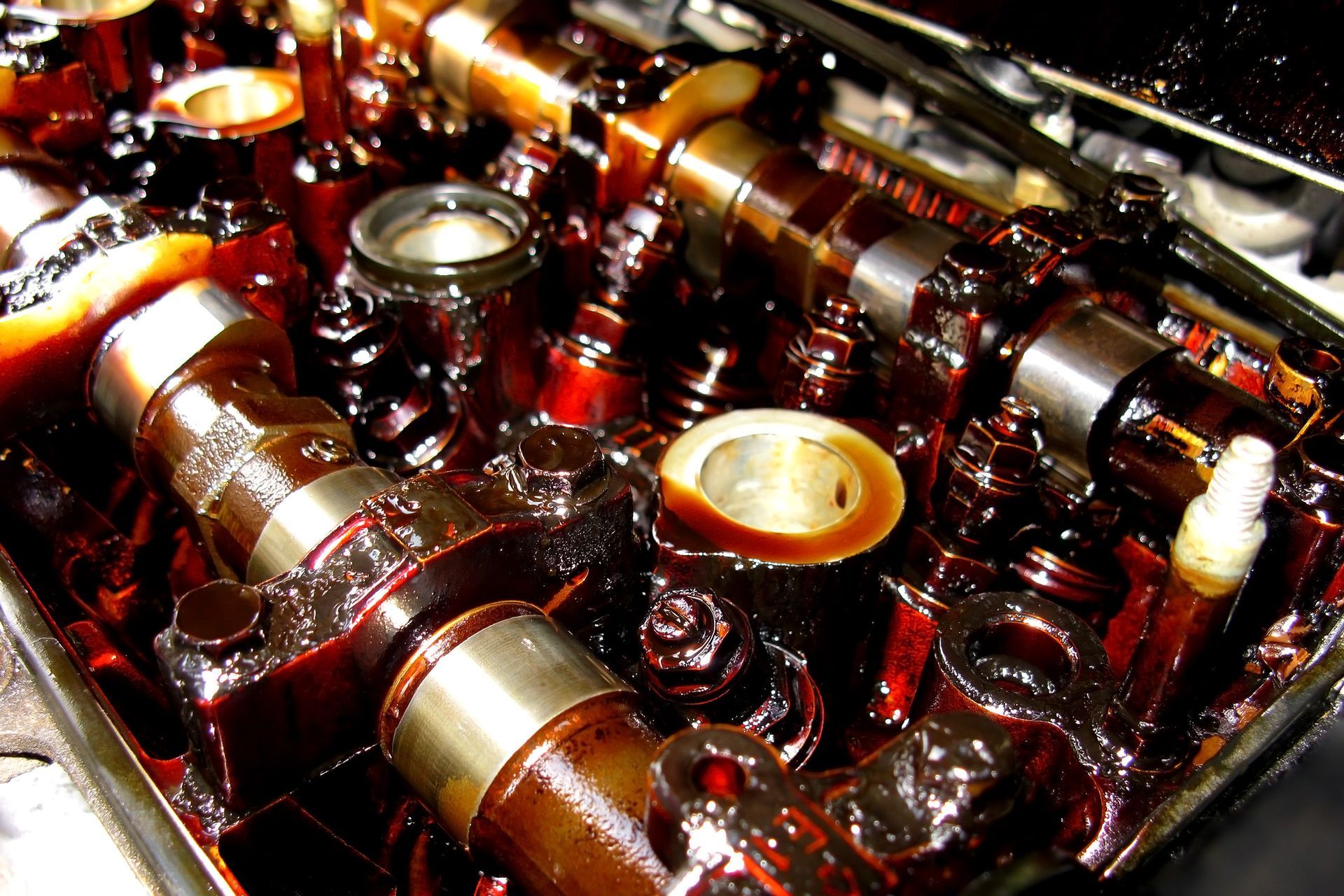Fluids keep every system cool, clean, and responsive. A five-minute check in your driveway catches small issues long before they become repairs. Here is a clear, owner friendly walkthrough you can use on modern cars and trucks across Delaware and Pennsylvania.
Why Fluid Checks Are Needed Between Services
Fluids age with heat, time, and load. Levels can drop from normal consumption, small seepage, or worn parts. A quick look each month protects engines, transmissions, and brakes, and it gives you early warning when something changes. In our bays, we often trace big repairs back to leaks that started as a faint stain others ignored.
Engine Oil: Level and Condition
Park on level ground with the engine off for a few minutes. Pull the dipstick, wipe it clean, reinsert it fully, then check the level against the marks. Oil should look amber to medium brown and feel slick, not gritty. If it is below the low mark, add the exact grade shown on the oil cap and owner’s manual.
If the dipstick shows milky streaks or a strong fuel smell, schedule a check soon.
Coolant: Reservoir First, Never Open When Hot
Find the translucent coolant reservoir and read the marks on the side. The level should sit between the minimum and maximum lines when the engine is cool. Color varies by formula, so do not mix types unless the label says they are compatible. If you must add, use the specified coolant and distilled water if your vehicle requires a mix.
Never open a radiator cap on a warm engine; pressure and heat can cause a dangerous spray.
Transmission Fluid: Dipstick or Sealed System
Older automatics and some trucks still have a transmission dipstick. With the engine running and the shifter cycled through the gears, check the level on the hot or cold side of the stick as the manual instructs. Fluid should be clear, pink to light red, and should not smell burnt. Many newer vehicles are “sealed” and use a level plug with the fluid at a specific temperature.
Those systems need a lift and scan tool, so do not remove plugs unless you are set up for it. Our technicians can measure temperature and level precisely so clutches and valves stay happy.
Brake Fluid: Small Reservoir, Big Safety Role
Locate the master cylinder reservoir near the driver's side firewall. Fluid should be between the marks and typically light amber for DOT 3 or DOT 4. Dark color suggests moisture pickup over time. Do not top off to mask low levels if pads are worn, since the level drops naturally as pads thin.
If you have to add, use only the specified DOT grade and keep the cap and funnel clean to avoid contamination.
Power Steering, Electric Assist, and Other Cases
Many modern vehicles use electric power steering, so there is no fluid to check. If your car uses hydraulic assist, the reservoir will be labeled and may use dedicated fluid rather than ATF. Look for the hot and cold marks and check on level ground. Whine on the steering lock or fresh oily streaks near the pump or rack are signs to visit a shop.
We can confirm the correct fluid and inspect for seepage that is hard to spot at home.
Windshield Washer, Differential, and Hybrid Notes
Top the washer reservoir with proper washer fluid for clean glass and freeze protection. Differentials and transfer cases live under the car and do not have easy dipsticks, but damp housings or spots on the driveway are clues to book an inspection.
Hybrids have a separate inverter coolant loop. If you see two coolant reservoirs, keep both within their marks and use the correct formula for each system.
Your Once-a-Month Driveway Checklist
- Engine oil: level between marks, color acceptable, no grit
- Coolant: reservoir level on the marks when cool, no mixing types
- Transmission: dipstick if equipped, or schedule a sealed system check
- Brake fluid: between marks, color not dark, cap clean
- Power steering: if equipped, level on marks, no fresh leaks
- Washer fluid: topped up for clear visibility
- Quick leak scan: look under the car for fresh spots after an overnight park
Get Fluid Checks and Top-Ups in Delaware and Pennsylvania with Paul Campanella’s Auto Centers
Ready for a quick health check before a road trip or season change? Visit Paul Campanella’s Auto Centers in Delaware and Pennsylvania. Our technicians verify levels, test fluid condition, top up with the correct specifications, and note small leaks before they grow.
Schedule a visit today at one of our convenient locations and drive away with smooth shifts, steady temperatures, and confident braking.
- Paul Campanella's Auto Centers - Wilmington, 1015 W 28th St, Wilmington, DE
- Paul Campanella's Auto Centers - Pike Creek, 2379 Limestone Rd, Wilmington, DE
- Paul Campanella's Auto Centers - Talleyville, 3805 Concord Pike, Wilmington, DE
- Paul Campanella's Auto Centers - Kennett Square, 583 Unionville Rd, Kennett Square, PA
- Paul Campanella's Auto Centers - Swarthmore, 724 S. Chester Rd, Swarthmore, PA
- Paul Campanella's Auto Centers - Hockessin, 7300 Lancaster Pike, Hockessin, DE








